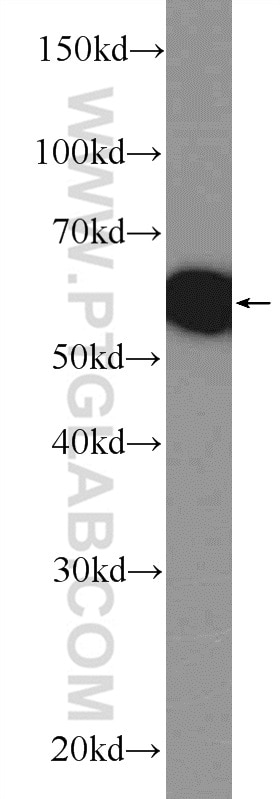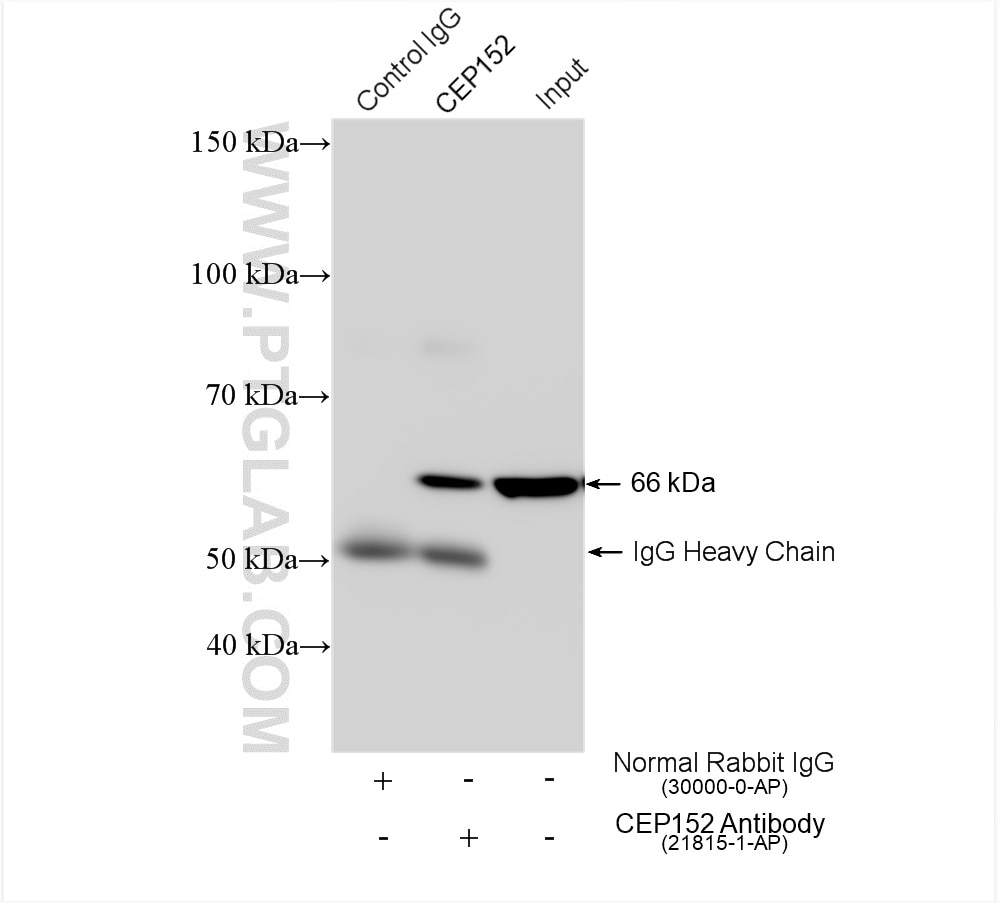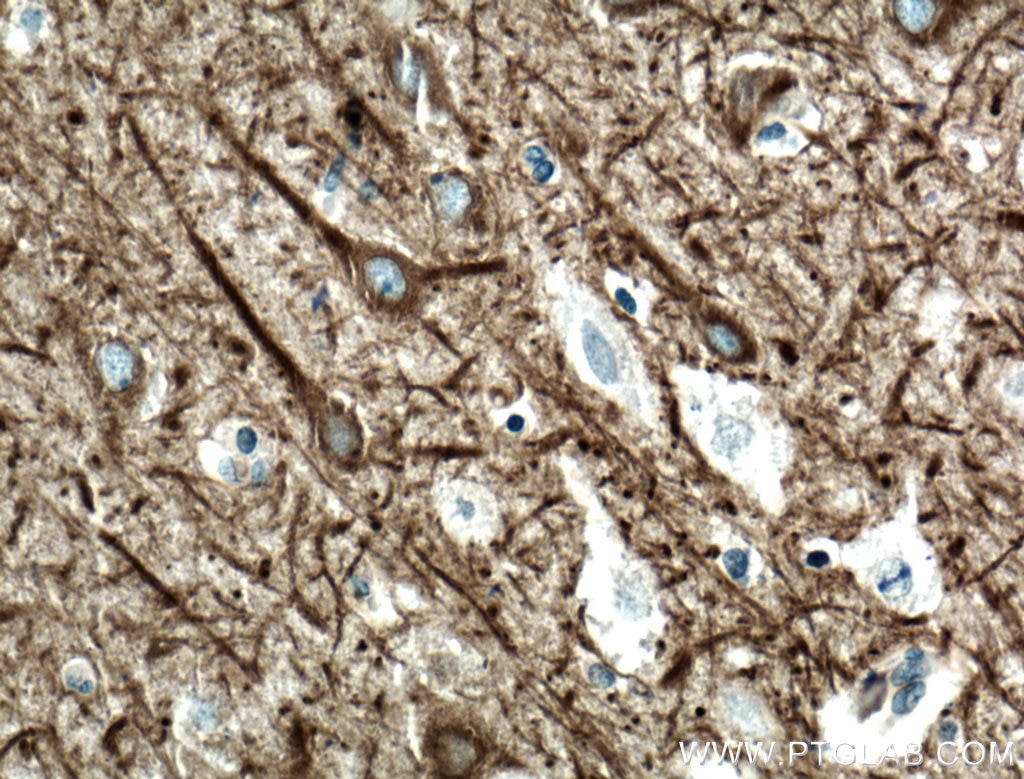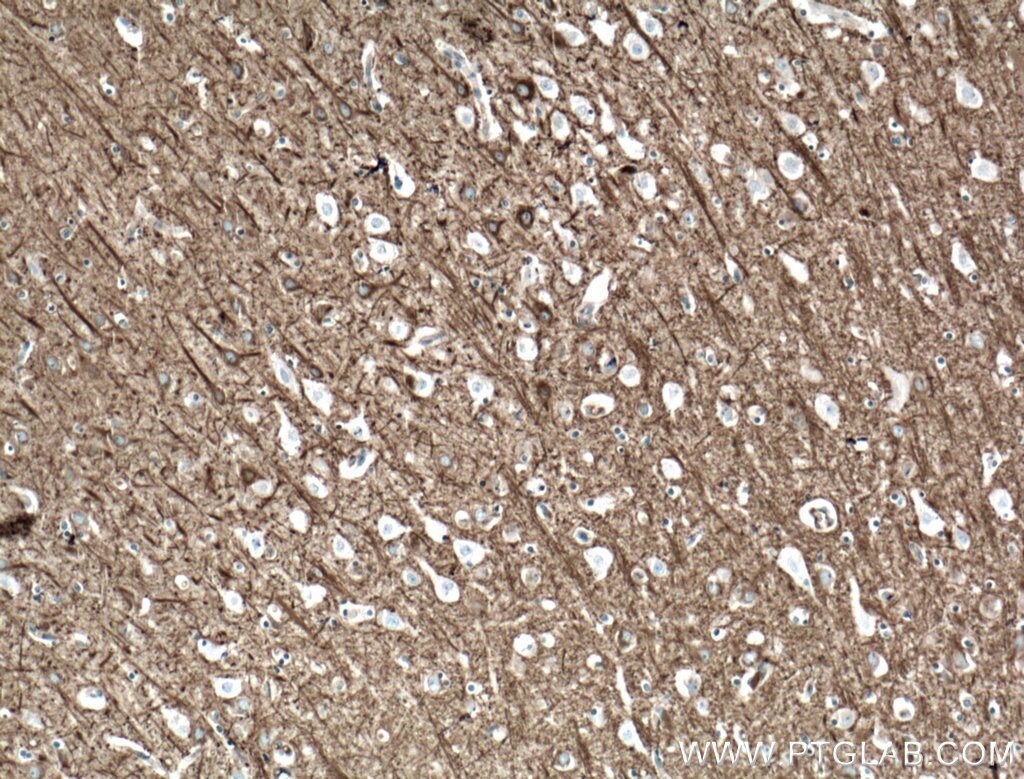- Phare
- Validé par KD/KO
Anticorps Polyclonal de lapin anti-CEP152
CEP152 Polyclonal Antibody for WB, IHC, ELISA
Hôte / Isotype
Lapin / IgG
Réactivité testée
Humain, souris
Applications
WB, IF, IHC, ELISA
Conjugaison
Non conjugué
N° de cat : 21815-1-AP
Synonymes
Galerie de données de validation
Applications testées
| Résultats positifs en WB | tissu cérébral de souris |
| Résultats positifs en IHC | tissu cérébral humain, il est suggéré de démasquer l'antigène avec un tampon de TE buffer pH 9.0; (*) À défaut, 'le démasquage de l'antigène peut être 'effectué avec un tampon citrate pH 6,0. |
Dilution recommandée
| Application | Dilution |
|---|---|
| Western Blot (WB) | WB : 1:200-1:1000 |
| Immunohistochimie (IHC) | IHC : 1:50-1:500 |
| It is recommended that this reagent should be titrated in each testing system to obtain optimal results. | |
| Sample-dependent, check data in validation data gallery | |
Applications publiées
| KD/KO | See 2 publications below |
| WB | See 3 publications below |
| IF | See 4 publications below |
Informations sur le produit
21815-1-AP cible CEP152 dans les applications de WB, IF, IHC, ELISA et montre une réactivité avec des échantillons Humain, souris
| Réactivité | Humain, souris |
| Réactivité citée | Humain, souris |
| Hôte / Isotype | Lapin / IgG |
| Clonalité | Polyclonal |
| Type | Anticorps |
| Immunogène | Peptide |
| Nom complet | centrosomal protein 152kDa |
| Masse moléculaire calculée | 189 kDa |
| Poids moléculaire observé | 66 kDa |
| Numéro d’acquisition GenBank | NM_014985 |
| Symbole du gène | CEP152 |
| Identification du gène (NCBI) | 22995 |
| Conjugaison | Non conjugué |
| Forme | Liquide |
| Méthode de purification | Purification par affinité contre l'antigène |
| Tampon de stockage | PBS avec azoture de sodium à 0,02 % et glycérol à 50 % pH 7,3 |
| Conditions de stockage | Stocker à -20°C. Stable pendant un an après l'expédition. L'aliquotage n'est pas nécessaire pour le stockage à -20oC Les 20ul contiennent 0,1% de BSA. |
Informations générales
CEP152, also named as KIAA0912, is a regulator of genomic integrity and cellular response to DNA damage acting through ATR-mediated checkpoint signaling. It is necessary for centrosome duplication. CEP152 functions as a molecular scaffold facilitating the interaction of PLK4 and CENPJ, two molecules involved in centriole formation. CEP152, ATR and CENPJ control cellular responses to DNA damage. CEP152 has some isoforms with MW 189 kDa, 152 kDa, 110 kDa and 66 kDa.
Protocole
| Product Specific Protocols | |
|---|---|
| WB protocol for CEP152 antibody 21815-1-AP | Download protocol |
| IHC protocol for CEP152 antibody 21815-1-AP | Download protocol |
| IP protocol for CEP152 antibody 21815-1-AP | Download protocol |
| Standard Protocols | |
|---|---|
| Click here to view our Standard Protocols |
Publications
| Species | Application | Title |
|---|---|---|
Nat Commun Identification of genes associated with cortical malformation using a transposon-mediated somatic mutagenesis screen in mice.
| ||
BMC Biol CCHCR1-astrin interaction promotes centriole duplication through recruitment of CEP72 | ||
Cell Rep Dual roles of CCDC102A in governing centrosome duplication and cohesion
|





